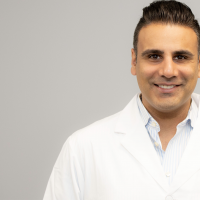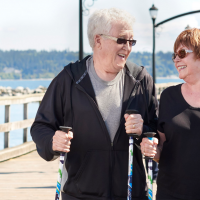Interventional radiologist Dr. Darren Klass was at a friend’s bat mitzvah when he received an important call. A patient who just had surgery had been scanned for internal bleeding. Normally, Dr. Klass would have had to drive to Vancouver General Hospital (VGH) to view the images and make an assessment. Instead, using a new app, all he had to do was login on his iPad to see the scan remotely and conveniently.
“I took a look and called the physician back, to tell him I didn’t think anything needed to be done that night and we made a management plan for the next morning,” he recalls. “It saved me from having to drive to the hospital, look at the scan and then calling the physician—so it saved a huge amount of time for everyone because the consultation time is a lot faster. If a patient is in really bad shape, every second counts and this saves us a lot of time.”
Over the past six months, as part of a pilot project, VGH interventional and neuro-interventional radiologists have been using the Siemens syngo.via WebViewer app, which allows them to rapidly and securely access images outside of the hospital on their smartphones and tablets.
“For many years, it was very cumbersome for clinicians, radiologists and interventional radiologists to look at medical imaging outside of the hospital,” explains Dr. Tim O’Connell, an Emergency and Trauma radiologist at VGH, who initiated the project. “For example, if someone is having a stroke, you need to act quickly to treat them and get a therapy plan set up—they’re losing millions of neurons per minute.”
About a year ago, upon recognizing a need to react more quickly, Dr. O’Connell looked into different types of technology that could help close the crucial gap of time and assessment. His solution was “turning on” the mobile device access to syngo.via which is already used in the radiology department. He worked with the Vancouver Coastal Health IT department, who developed a new, fast and secure way for doctors to access the software on their smartphones and tablets.
Dr. O’Connell and donor, Sylvia Chen, have funded the pilot project. The radiologist says they could use more funding for additional software licenses so that more clinicians can access the technology to help more patients.
“It would make a big difference in care,” he says. “I would eventually like to see about 20 clinicians—stroke neurologists, radiologists, interventional radiologists and potentially more—using the system.”
Help fund more equipment like this app by making a donation.

